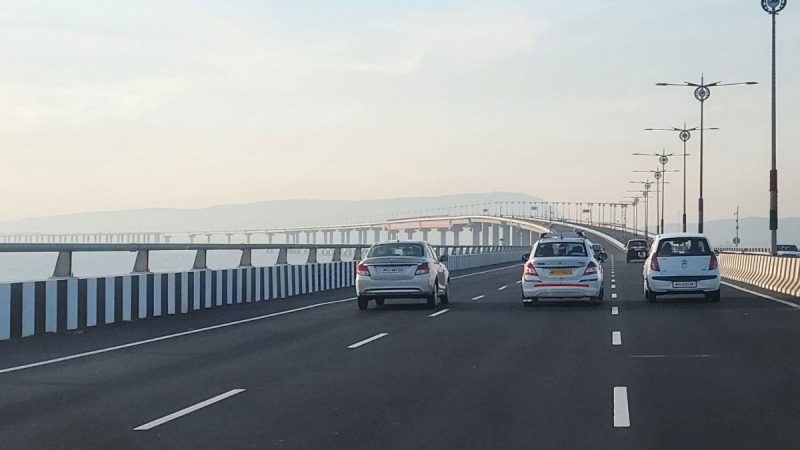The Atal Setu, India’s longest sea bridge, has completed its first year of operations since its inauguration by Prime Minister Narendra Modi on 13 January 2024. Also known as the Mumbai Trans Harbour Link or the MTHL, the bridge has served as a vital connection between Mumbai and Navi Mumbai. The bridge stretches across 21.8 kilometres. The ridership of the bridge has also changed since it was inaugurated. Here are all of the important details that you would need to know about this bridge.
Atal Setu, India’s Longest Sea Bridge, Completes One Year
According to an article that was recently published by the Hindustan Times or HT, the bridge was built at a cost of ₹17,843 crore. The funding was from the Japan International Cooperation Agency and the bridge has facilitated the movement of over 8.3 million vehicles in its inaugural year.
Despite initial projections of 89,463 daily vehicles, the actual daily average stands at 22,689, even after a 50 per cent reduction in toll rates from ₹500 to ₹250 for passenger vehicles. Passenger cars dominated the bridge’s usage, accounting for roughly 77.2 million of the total crossings.
Multi-axle vehicles, buses, and light commercial vehicles followed at considerably lower numbers. The bridge recorded its peak traffic on its opening day, with 61,807 vehicles, largely comprising joy riders.
How Has Vehicular Traffic Changed Since Its Inauguration
The Mumbai Metropolitan Region Development Authority or the MMRDA has constructed and is responsible for maintaining the bridge. It has stationed three specialised teams for round-the-clock monitoring, medical assistance, and traffic management.
To enhance connectivity, plans are underway to link the Atal Setu with the Mumbai-Pune Expressway and the Bandra-Worli Sea Link via an elevated road from Sewri to Worli. While the bridge has significantly reduced travel times, critics argue that steep toll rates and inadequate connectivity to major roadways have contributed to lower-than-expected usage.
Nevertheless, Metropolitan Commissioner Sanjay Mukherjee and Chief Minister Devendra Fadnavis have praised the bridge’s impact on regional development. Local businesses have already begun adapting to the new infrastructure, with some firms relocating to take advantage of improved connectivity.
Do you agree with the critics who say that the bridge was a white elephant project? Let us know in the comments section below!
Cover Image Credits: Wikimedia Commons
For more such snackable content, interesting discoveries and the latest updates on food, travel and experiences in your city, download the Curly Tales App. Download HERE.

